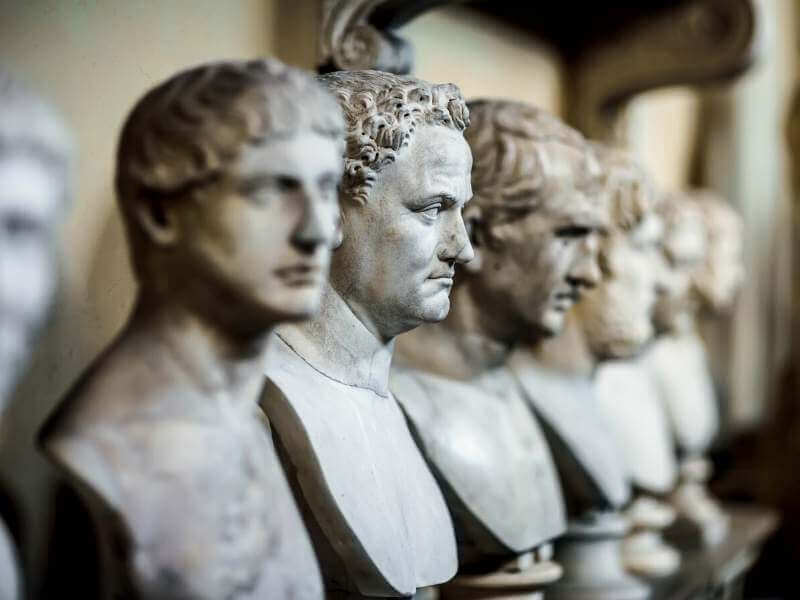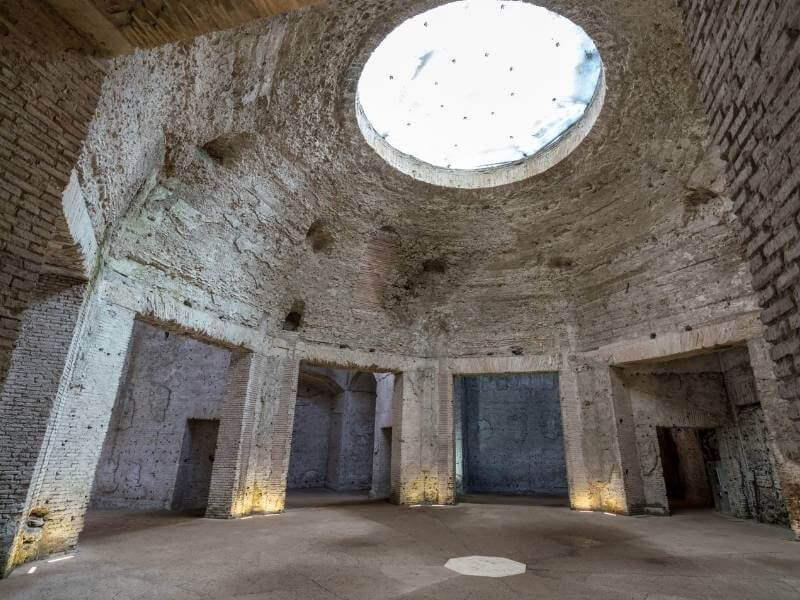The Via Appia Antica in Rome – The famous Appian Way
Home » Attractions » Via Appia Antica
| DE

- - Updated on
With more than 2300 years of history, the Via Appia Antica or “The Appian Way” is one of the oldest access roads in Rome.
It is, therefore, not only one of the most historic attractions in Rome but also forms a beautiful scenic bridge between the center of Rome and the Roman Campagna.
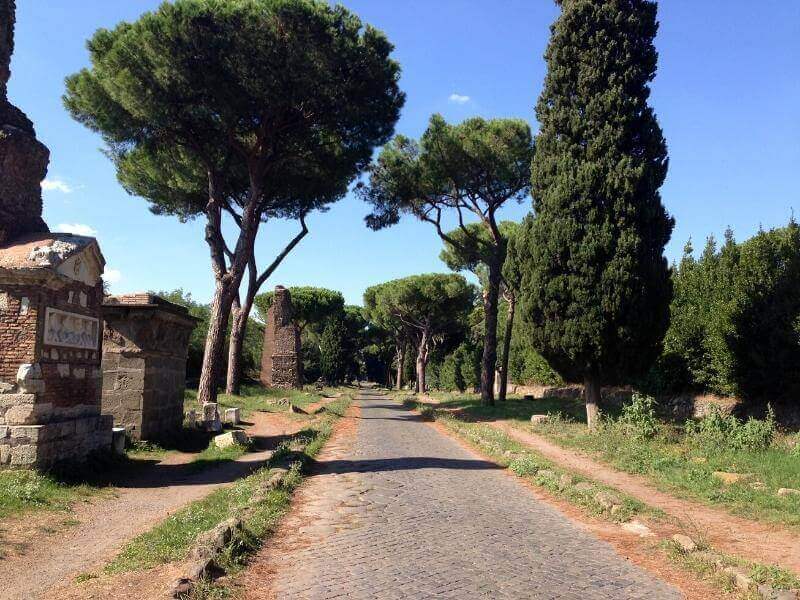
The Roman road, which initially “only” led to Capua, 217 km away, was completed in 312 BC. From then on, Roman soldiers and traders could travel much faster if necessary.
A journey from Rome to the economically competitive city of Capua now only took 5 to 6 days, a quantum leap at the time! At the same time, the stable cobblestones served as a transport route for all goods.
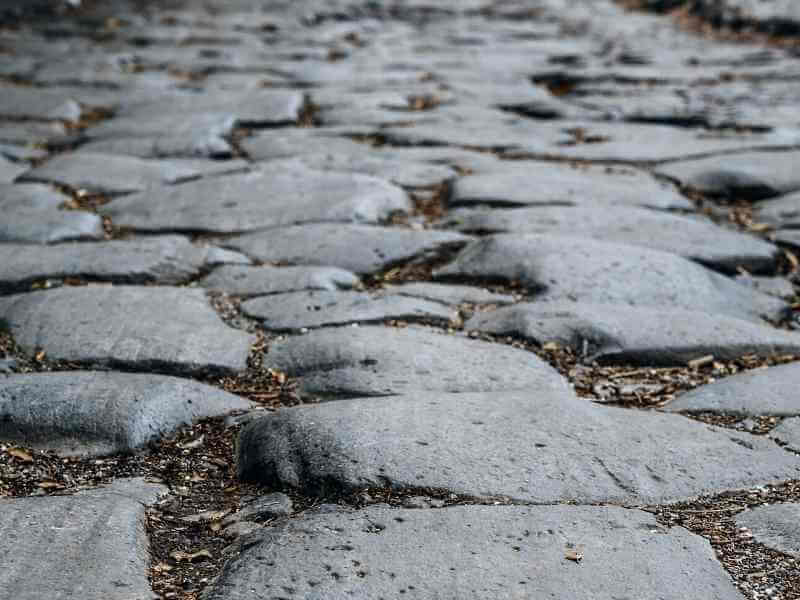
The strategically important road was named after its builder, Consul Appius Claudius Caecus. He pushed ahead with the construction of what would later become a 540 km long route from Rome to Brindisi and also commissioned the city’s first water pipeline.
On the idyllic-looking road, you can still find many original paving stones from antiquity. The many signs of wear and tear on the stones, some made of lava rock and cement, give an idea of the arduous journeys made by horse and cart.
Tip: Be sure to explore Via Appia by bike!
Most tourists like to explore the Appian Way by bike or electric bike. Cycling under cypresses and pine trees, the two-thousand-year-old Roman road passes numerous ruins leisurely.
As the Roman population was only allowed to bury their loved ones outside the city walls, many fascinating tombs are here today. We recommend exploring the route from the ‘Porta di San Sebastiano’ to the ‘Villa Quintili.’
This distance of just under 7 km can be covered by bike in 25-30 minutes. Photo breaks and visits to the ruins should, of course, also be taken into account.
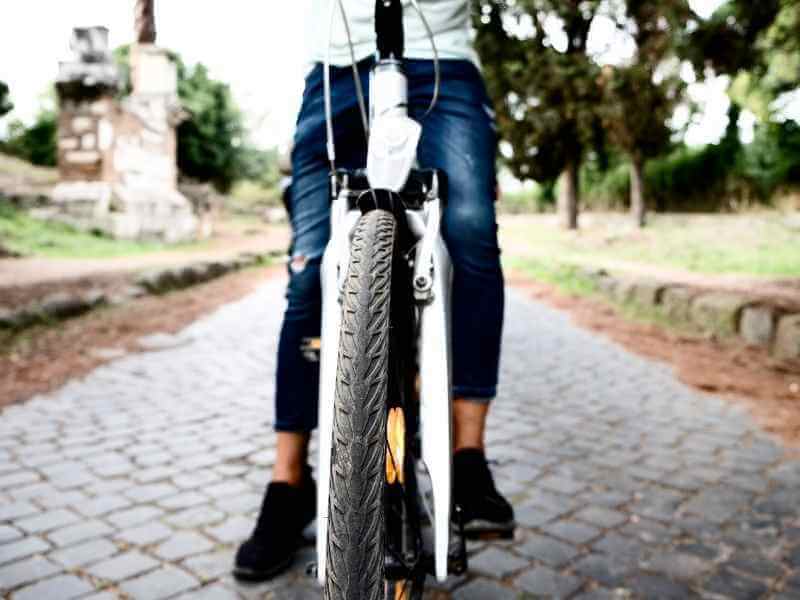
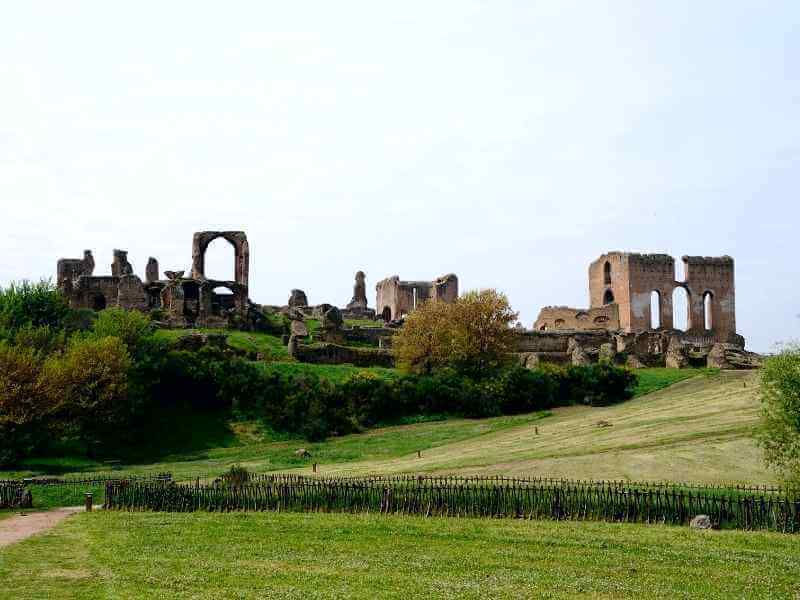
Sights along the Appian Way
The course of the Via Appia is marked by many milestones, which provide you with information about the respective distances, destinations, and clients of some of the ruins.
You will find the first milestone at the ‘Via di Porta San Sebastiano,’ which is today’s start of the Via Appia. From here, continue by bike past the museum of the Roman city walls (‘Mura Aurelian) to the church of ‘Santa Maria in Palmis,’ which was built in the 9th century.
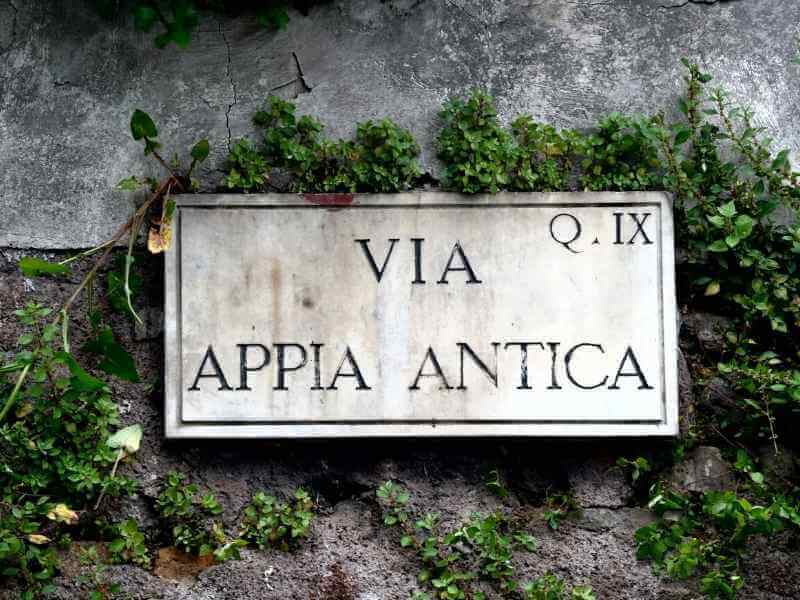
According to the Acts of the Apostles, Christ, and Peter, fleeing Rome at the time, met here. After their conversation, Peter is said to have returned to Rome to suffer martyrdom.
You can reach the Calixtus Catacombs from the cathedral in just a few minutes (turn right just before the ‘Instituto Salesiano S.Tarcisio’). These contain over 170,000 tombs and can be visited on a guided tour.
Another kilometer away is the Maxentius Circus, built between 306 and 312 AD, which is considered one of the best-preserved racecourses in ancient Rome and is located just behind the Circus Maximus. Incidentally, an obelisk that once adorned the Circus now stands in Piazza Navona.
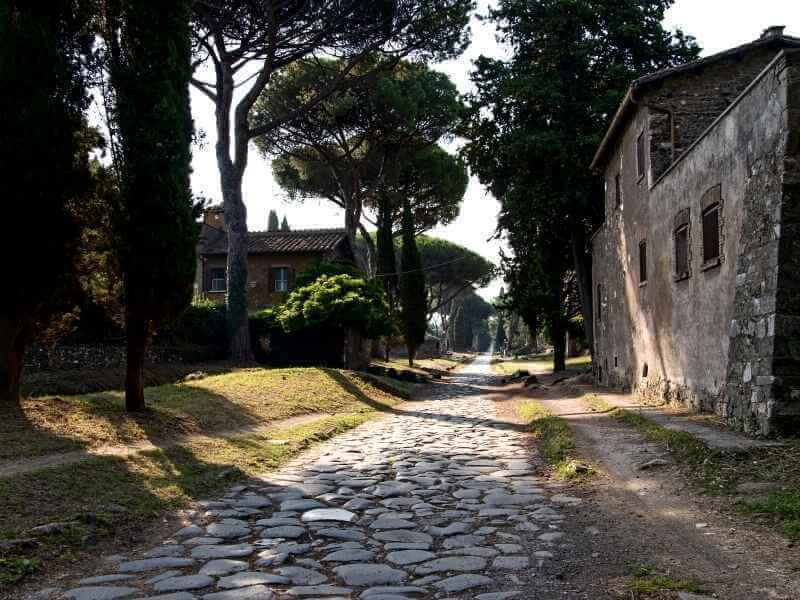
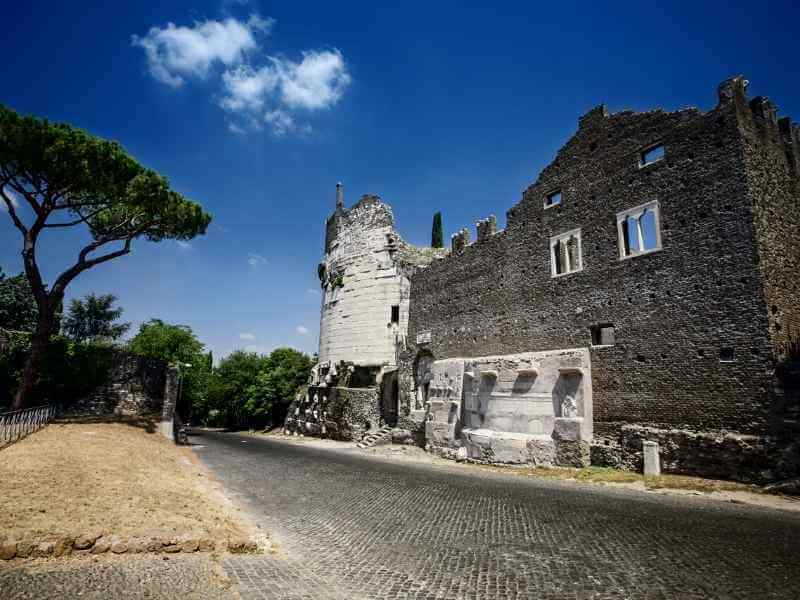
The further out of town you go on your discovery tour, the more tombs you will see. This is because tombs far outside the city were much cheaper.
Probably the most famous tomb is that of Caecilia Metella, daughter of a general under Caesar (a combined ticket to the tomb and the Baths of Caracalla is offered here!)
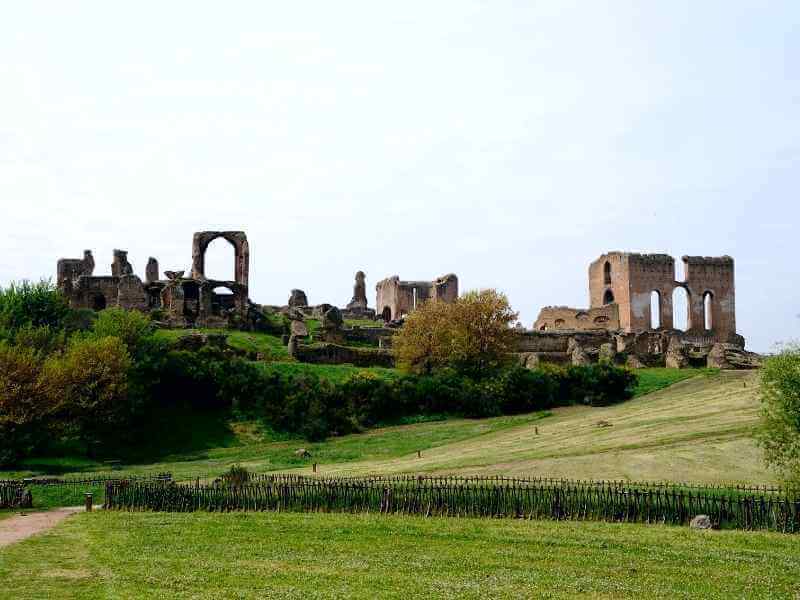
Right next door in the red stone house, you can enjoy some excellent traditional Roman cuisine! (Opening hours: Tue-Sat 12-23 hrs / Sun 12-15 hrs). Otherwise, a kiosk is close (on the corner of Via Caecilia Metella), where you can get coffee, cold drinks, or sandwiches.
Another 5 km away, you will find the Villa of the Quintilians, which can be visited for an entrance fee of 5 euros. Emperor Commodus, known for his preference for the countryside, once lived here. Even today, the remains of the luxurious villa cover a large area on the edge of the Via Appia Antica.
Tips for exploring the Via Appia
History of the Via Appia Antica in Rome
Shortly after the completion of the Roman road, the Via Appia Antica proved to be a clever move in Roman politics. Despite several devastating setbacks between 343 and 290 BC, the Romans took advantage of the newly created transportation options and thus brought the second war against the Samnites to a victorious conclusion.
They conquered the cities of Capua, Cumae, and Acerra and forged an important alliance with Naples. From then on, Rome had enormous influence over southern Italy and was able to strengthen its position of power further.
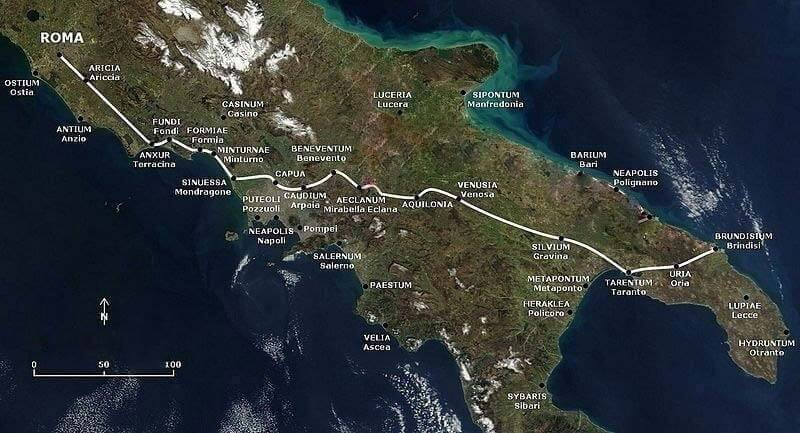
The expansion of the connecting road took its course and led to the city of Brindisi in southern Italy as early as 190 BC. This opened the “gateway to the Orient” for the Romans, leading to raids in the Middle East and North Africa.
The ancient port city of Ostia Antica near Rome was put into operation in the 1st century AD. Therefore, The looted goods had to be transported 584 km along the Appia Antica before they could be loaded from A to B much more quickly by ship.
In 71 BC, it was the commander-in-chief Crassus who had a large number of captured, rebellious slaves crucified on the Via Appia Antica. He is said to have erected a cross every 200 meters along the 200 km route to Capua.
How to get to the Via Appia Antica:
Transportation:
Metro stop Circo Massimo is about 1.5 kilometers from the starting point Porta San Sebastiano.
Bus: 1,50 Euro / ride
Bus line 218 (from San Giovanni in Laterano – runs every hour)
Bus line 118 (from Metro B: Circo Massimo, runs every 20 minutes)
-> This bus covers part of the Via Appia and stops, for example, at the Catacombs of San Callisto.
Hop-On/Hop-Off bus: Exit: Baths of Caracalla + walk 800 meters.
Only a few buses run here at weekends.
Alternative: Taxi from San Giovanni in Laterano to the church of Santa Maria in Palmis (approx. 14 euros)
Special features: No motorized vehicles are allowed here on Sundays.

Editor: Sebastian Erkens
Hey and welcome to Rome-Tourist! My name is Sebastian and I travel regularly to Rome, Italy.
On our Rome blog you will get valuable travel tips. If you have any questions about specific tours or sights, feel free to leave us a comment.
These articles may also interest you:

